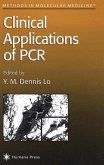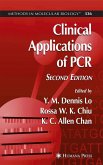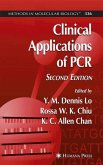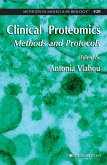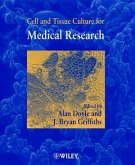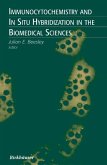The polymerase chain reaction (PCR) is one of the most important molecular biological methods ever devised, with numerous applications to cli- cal molecular medicine. Since its description in 1985, PCR has undergone tremendous improvements, and many variations on the basic PCR theme have been published. With such a large volume of PCR-related literature, a clinical scientist wishing to use the technique will have a difficult task loc- ing the relevant information to implement it effectively. There is thus clearly a need for an up-to-date volume with detailed protocols to facilitate the setting up of those techniques most relevant to clinical applications. Unlike some other books on this topic, Clinical Applications of PCR includes only methods that are of direct relevance in clinical settings. The book is organized in three parts: an introductory section, a section on general methodology, and a final section with specific clinical applications. The first section covers the basic principles of PCR and is most useful to those new to molecular diagnosis. The next chapter includes useful tips for setting up a PCR laboratory. Section 2 then outlines some of the most commonly used PCR-based techniques in molecular diagnosis. Section 3 includes carefully chosen examples that represent typical applications of PCR in diverse clinical fields, encompassing hematology, oncology, genetics, and microbiology.
Hinweis: Dieser Artikel kann nur an eine deutsche Lieferadresse ausgeliefert werden.
Hinweis: Dieser Artikel kann nur an eine deutsche Lieferadresse ausgeliefert werden.
". . . one of the first texts to carefully document all the needs required to perform PCR. . . [By] covering the fundamentals, methodologies, and applications of PCR, the editor has created a unique document that will be welcome in the clinical laboratory."-Doody's Health Sciences Book Review Journal "Each chapter is clearly written and provides enough background material to explain the significance and application of the procedure. The protocols include sufficient detail to enable the reader to develop the test. This manual will be an important laboratory resource to those using PCR in the diagnosis of human diseases and should be of great interest to both molecular and clinical pathologists."-Archives of Pathology and Laboratory Medicine
From the reviews:
"...will be an important laboratory resource to those using PCR in the diagnosis of human diseases and should be of great interest to both molecular and clinical pathologists." -Archives of Pathology and Laboratory Medicine
"Each chapter is clearly written and provides enough background material to explain the significance and application of the procedure. The protocols include sufficient detail to enable the reader to develop the test. This manual will be an important laboratory resource to those using PCR in the diagnosis of human diseases and should be of great interest to both molecular and clinical pathologists."-Archives of Pathology and Laboratory Medicine
"...a unique document that will be welcome in the clinical laboratory as well as the research field." -Doody's Health Sciences Book Review Journal
"This book is pitched at both pathologists and microbiologists who use PCR in a diagnostic setting. It provides a user-friendly and relatively brief theoretical background to conventional and real-time PCR ... . This book should appeal to professional laboratory scientists and students ... as well as to more experienced individuals who want to use or extend specific applications. This book would be a useful purchase as a reference source and technical manual for diagnostic pathology and microbiology laboratories." (David Hampson, SGM- Society for General Microbiology, 2007)
"...will be an important laboratory resource to those using PCR in the diagnosis of human diseases and should be of great interest to both molecular and clinical pathologists." -Archives of Pathology and Laboratory Medicine
"Each chapter is clearly written and provides enough background material to explain the significance and application of the procedure. The protocols include sufficient detail to enable the reader to develop the test. This manual will be an important laboratory resource to those using PCR in the diagnosis of human diseases and should be of great interest to both molecular and clinical pathologists."-Archives of Pathology and Laboratory Medicine
"...a unique document that will be welcome in the clinical laboratory as well as the research field." -Doody's Health Sciences Book Review Journal
"This book is pitched at both pathologists and microbiologists who use PCR in a diagnostic setting. It provides a user-friendly and relatively brief theoretical background to conventional and real-time PCR ... . This book should appeal to professional laboratory scientists and students ... as well as to more experienced individuals who want to use or extend specific applications. This book would be a useful purchase as a reference source and technical manual for diagnostic pathology and microbiology laboratories." (David Hampson, SGM- Society for General Microbiology, 2007)


